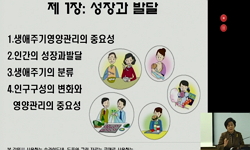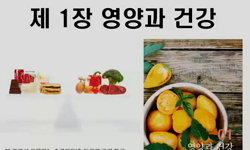This study examined the effect of restricting feed intake and the subsequent compensatory growth in Guzera females. Eighteen animals with an initial age of 21 months and a mean weight of 268.17 kg were placed in three groups according to the alimentar...
http://chineseinput.net/에서 pinyin(병음)방식으로 중국어를 변환할 수 있습니다.
변환된 중국어를 복사하여 사용하시면 됩니다.
- 中文 을 입력하시려면 zhongwen을 입력하시고 space를누르시면됩니다.
- 北京 을 입력하시려면 beijing을 입력하시고 space를 누르시면 됩니다.
https://www.riss.kr/link?id=A101681623
- 저자
- 발행기관
- 학술지명
- 권호사항
-
발행연도
2011
-
작성언어
English
- 주제어
-
등재정보
SCIE,SCOPUS,KCI등재
-
자료형태
학술저널
-
수록면
791-799(9쪽)
- 제공처
-
0
상세조회 -
0
다운로드
부가정보
다국어 초록 (Multilingual Abstract)
This study examined the effect of restricting feed intake and the subsequent compensatory growth in Guzera females. Eighteen animals with an initial age of 21 months and a mean weight of 268.17 kg were placed in three groups according to the alimentary regime: feed ad libitum; feed restricted to 20% dry matter; and feed restricted to 40% dry matter. In the restricted feed phase, the dry mater intake decreased as the restriction levels increased, influencing the reduction in intake of other nutrients. In the realimentation phase, the 40% restricted feed group ingested more dry matter (% BW) and crude protein ($weight^{0.75}$) than the group fed ad libitum (p<0.001). The serum nutrient concentrations were inversely proportional (p<0.001) to the restriction level, and there was no difference (p>0.001) in the realimentation phase. In the restricted feed phase, the final live weight decreased (p<0.05) as the restriction level increased. For the daily mean weight gain in the control group, there was no difference (p>0.05) compared to the animals with 20% feed restriction, but this was higher than in the group with 40% feed restriction. In the re-alimentation phase, the group with 40% feed restriction achieved higher weight gain rates, which was different from the control and 20% restriction groups. In both phases, the animals in the group with 40% feed restriction presented better feed conversion which was different (p<0.05) from the control group. In the feed restriction phase, it was observed that the intake of N, nitrogen excreted in feces and urine, nitrogen balance and nitrogen retention decreased (p<0.05) with the restriction level. None of the variables were influenced in the re-alimentation phase. These results show that feed restriction by 40% can be adopted as a nutritional management practice.
동일학술지(권/호) 다른 논문
-
An Overview of Feathers Formation, Moults and Down Production in Geese
- Asian Australasian Association of Animal Production Societies
- Kozak, J.
- 2011
- SCIE,SCOPUS,KCI등재
-
- Asian Australasian Association of Animal Production Societies
- Huang, S.C.
- 2011
- SCIE,SCOPUS,KCI등재
-
Smallholder Pig Rearing Systems in Northern Lao PDR
- Asian Australasian Association of Animal Production Societies
- Phengsavanh, P.
- 2011
- SCIE,SCOPUS,KCI등재
-
The Effect of Melatonin on Mitochondrial Function in Endotoxemia Induced by Lipopolysaccharide
- Asian Australasian Association of Animal Production Societies
- Liu, Jing
- 2011
- SCIE,SCOPUS,KCI등재







 ScienceON
ScienceON






